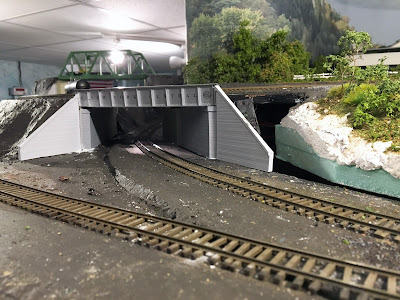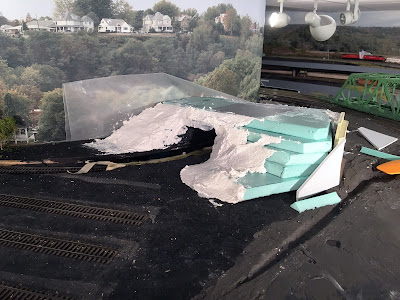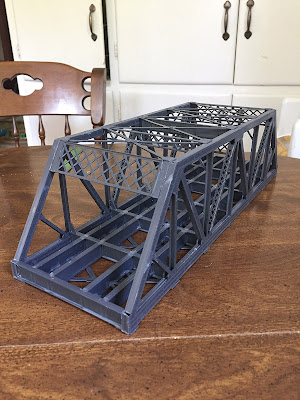Last year, we were invited to have the Onondaga Cutoff be part of an annual round-robin series of operating sessions where a group of layouts in New Jersey are open for a group of modelers and operators from Virginia and Maryland to visit and have a guest operating session. It was a pleasure to meet so many other modelers of note and to host such a great group of operators!
This year, we were invited to join the same group on their turf for a weekend of operations and open houses. I was able to operate on two layouts that have long been inspirations to me: Mat Thompson's Oregon Coast, and Doug Kirkpatrick's Virginian & Western. Both were wonderful hosts, and both layouts are nearly complete with robust operations and amazing scenery. So, I asked permission from the layout owners to share a few of my photos of their spectacular work here.
Friday I was at the Oregon Coast (another 'OC'!) hosted by Mat and Victoria Thompson:
Jack & Tom hard at work at Hoyt Street Yard, Portland Oregon
Jerry working hard at the big Swift Meat Plant outside of Hoyt Street Yard
Fabulous scenery on Mat's Oregon Coast - the Victoria local passing an abandoned logging camp.
Friday evening social at Mat's after the session. Great camaraderie!
Saturday morning we find ourselves at Doug Kirkpatrick's incredible Virginian & Western, inspired by the Norfolk & Western in VA. I'm quite partial to the signals, of course, but the hand-laid track is amazing and the scenery very convincing.
The tail end of my freight train, 99, working at Jamestown Yard. All cabooses are lit. The depth of these scenes and the flowing trackwork are a pleasure to see.
Finally, another layout that does night lighting! While Doug uses blue lights, the effect is wonderful with all the lit buildings and equipment he runs. Here the switcher at Cincinnati waits in the clear while my train 96 rolls past.
An overview of the station and mainline at Loraine, lit up after sunset.
Signals lit up for east and westbounds to meet at Falls Church, home to a local even overnight.
This was a weekend that I had looked forward to for a full year, and even given high expectations, the weekend exceeded them. The layouts were wonderful, the operations satisfying and interesting, and the camaraderie reminded me there are still a lot of good people out there. In short, this is one of the things that makes this hobby so special to us - it's all just good fun.
Happy Thanksgiving to you and your family!
~RGDave



















































